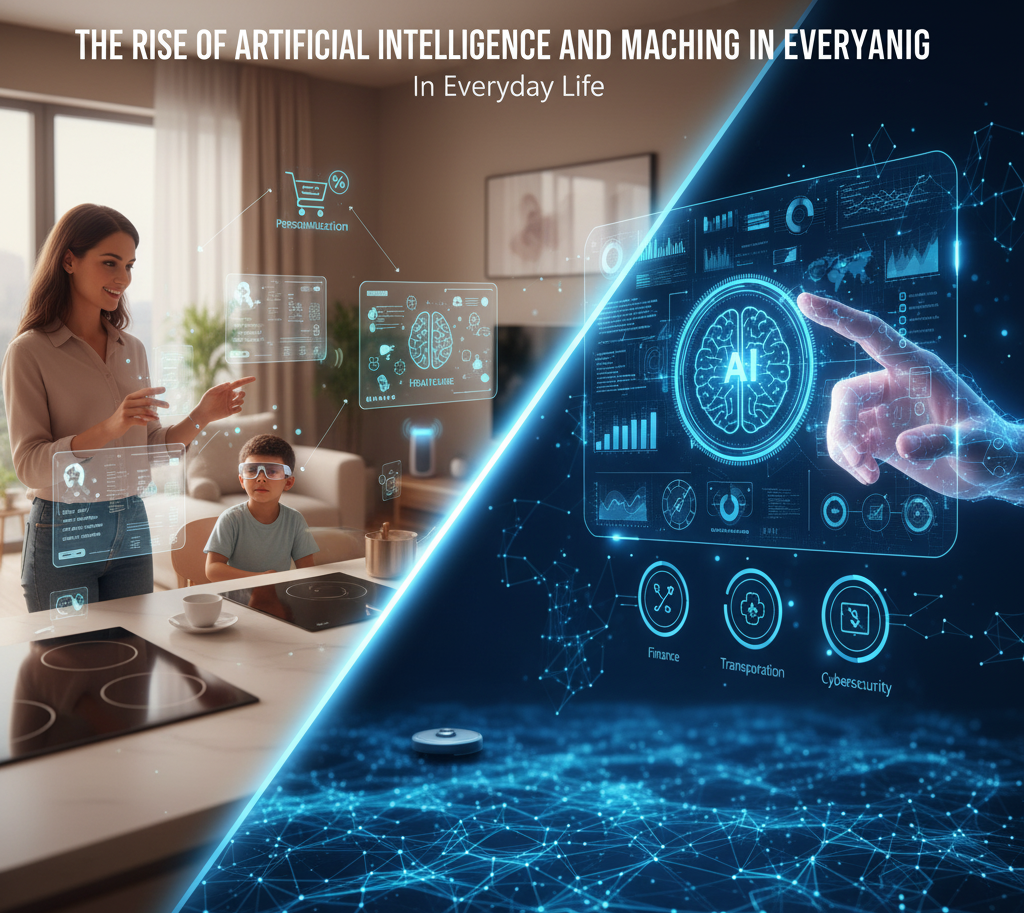Introduction
Artificial Intelligence (AI) and Machine Learning (ML) are no longer futuristic concepts—they are part of our daily lives. From voice assistants like Siri and Alexa to personalized recommendations on Netflix and Amazon, AI and ML are shaping the way we work, shop, learn, and interact. Businesses, governments, and even healthcare providers are leveraging these technologies to improve efficiency, accuracy, and decision-making.

Understanding Artificial Intelligence and Machine Learning
Artificial Intelligence is the science of building machines that can mimic human intelligence, while Machine Learning is a subset of AI that enables systems to learn from data and improve over time without being explicitly programmed. Together, they power intelligent automation, predictive analytics, and real-time decision-making.
Importance in Today’s World
- Efficiency & Automation: AI-driven chatbots handle customer queries 24/7.
- Personalization: ML algorithms provide personalized shopping, entertainment, and content experiences.
- Healthcare Innovation: AI aids in diagnostics, drug discovery, and robotic surgeries.
- Business Growth: Predictive analytics helps companies forecast trends and improve customer satisfaction.
Real-World Applications
- Finance: Fraud detection and algorithmic trading.
- Education: Adaptive learning platforms that tailor content to students.
- Transportation: Self-driving cars and smart traffic management.
- Cybersecurity: AI-based tools detect and prevent cyber threats.

Latest Trends & Future Outlook
Generative AI, such as ChatGPT, is revolutionizing content creation, coding, and design. Edge computing combined with AI is powering smart cities, autonomous vehicles, and real-time IoT analytics. The future will likely see AI integrated into Web3, Metaverse platforms, and Quantum Computing for faster, more secure systems.
Conclusion
Artificial Intelligence and Machine Learning are becoming essential pillars of modern life. As innovation accelerates, they will continue to transform industries, enhance human capabilities, and redefine the future of technology.


















